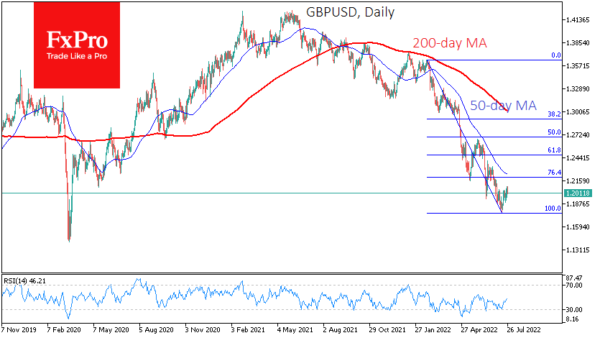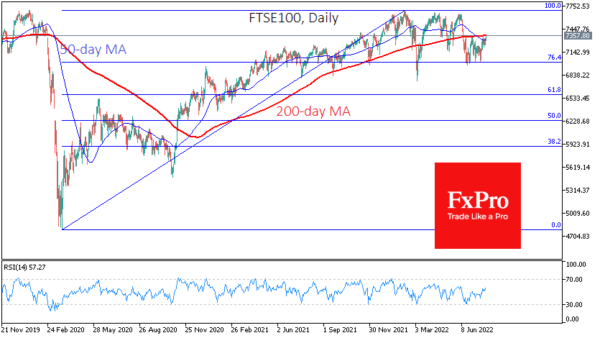The British Pound is back above $1.2000, while FTSE100 is knocking on its 200-day moving average from below, testing the 1.5-month high area.
The combination of a rising Pound and FTSE deserves attention, as this is often a sign of a global recovery in demand for risky assets. However, we would not rush to such conclusions, as so far, the market bounce fits into a corrective pullback after a multi-month sell-off.
Market forces are not preventing a reversal, potentially accumulating liquidity ahead of the Fed meeting and publishing preliminary US GDP data for the second quarter.
GBPUSD has lost over 13.5% in five months of decline and has gained back around 2.5% in the last ten days. Perhaps only if the Pound rises above 1.2200 (near the May lows), or better still, above 1.2250 (where the 50-day moving average passes), will it be possible to say that we are seeing the first signs of the Pound’s transition to long-term growth.
The FTSE100 is testing the 200-day moving average right now, near 7360. This is a psychologically significant line that does not go unnoticed by players. A sharp decline accompanied the fall below that line in March and June. Before that, from September till the end of February, the index managed to bounce back from that curve.
Examples to the contrary are easy to find. A consolidation above the 200 EMA would additionally fuel the appetite for buying. However, setting yourself up for a later rise would be premature. As in the period from September to March, the market participants might increase their selling on the approach of this curve, as they did at the end of last month.
The fundamentals are now on the bears’ side, from a looming economic slowdown and loss of momentum in the labour market to tightening monetary policy. We can only talk about a sustained reversal in risk appetite from fundamentals on signs that key central banks are easing monetary policy pressure. But it is too early to tell because tomorrow, the Fed is expected to raise its key rate by 75-100 points and signal another 100-point increase by the end of the year.














